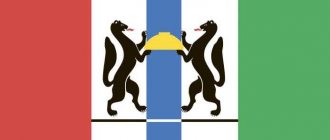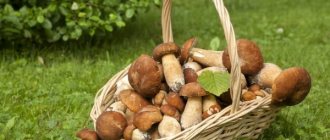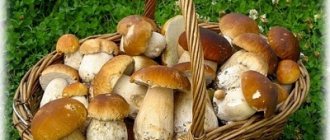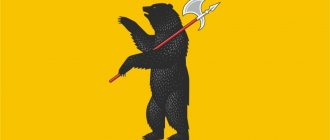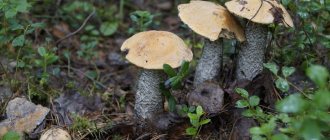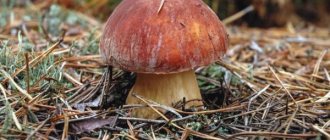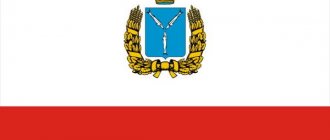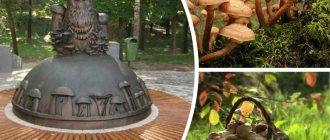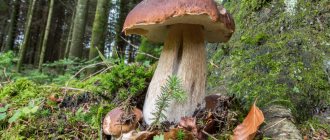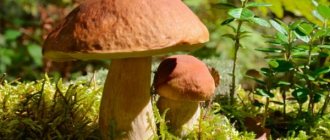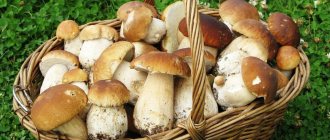It is very difficult to call the Saratov region a forest zone, rich in beautiful trees and dense thickets. But even despite the minimum forest areas, collecting a lot of mushrooms from the residents of the South-Eastern part of Russia is not as difficult as it might seem at first glance. Looking at real reviews with photographs of the harvest, we can say that despite the small ecologically clean territory, mushroom pickers manage to fill baskets and buckets to the top. More than 100 types of edible and conditionally edible mushrooms are suitable as the main ingredient for first and second courses, snacks, dried and frozen, and canned for the winter months.
Mushrooms of the Saratov region in 2022 are a rich harvest, part of which many residents of this region have already managed to collect, leaving the growing gifts for new guests.
Mushroom picker secrets: mushroom harvest conditions and correct harvest time
Mushroom yields in the Saratov region are influenced by weather conditions.
There are often lean years when, with little rainfall, drought occurs and mushrooms appear only in small quantities. The year 2022 was quite generous for the mushroom harvest; the largest harvest was collected by local residents in the Petrovsky district and in the village of Bolshoi Melik. Are there mushrooms in Saratov now? Edible mushrooms are suitable for cool, rainy weather, so the best time to collect them is autumn. And you can look for mushrooms until the first frost. And after winter, you can go on a quiet hunt in the spring and summer - from May to June.
Mushrooms of the Saratov region - boletus
If you decide to pick mushrooms in the Saratov region, then you should pay attention to the weather - warm nights and fog are a sign of mushroom season. In the spring and throughout the rainy summer, mushroom pickers collect boletus and boletus mushrooms, as well as porcini mushrooms.
It is recommended to go for mushrooms 2-3 days after precipitation; it is at this time that young, grown mushrooms can be found in the forests. It is worth considering that many locals go to the forest on weekends, so in order to collect full baskets of mushrooms, it is better to choose weekdays for collecting.
What to do if you get lost in the forest
Do not panic! If there is a mobile connection, then call 112. If the phone does not work, then you need to listen to the noise: in quiet times, the noise of a tractor can be heard 3-4 km away, a running train 10 km away, a dog barking 2-3 km away, loud screams 1 km away. km, car horns 2-3 km away, the sound of an ax and the noise of a motorcycle 500 meters away. Rescuers from the Ministry of Emergency Situations recommend paying attention to landmarks before entering the forest: which side the sun is on, which direction the river flows. For example, if the sun shines in your face when entering the forest, then when you exit it should be behind you
An even more reliable landmark is a river or stream - when entering the forest, pay attention to which direction the water flows and, if you get lost, go out in the opposite direction to the flow. If you realize that you are circling in one place, don’t worry. This is called the “right leg trick”, people always have one step shorter than the other, so you will definitely skid to the side.
What mushrooms can you find?
Saratov forests, like others, divide mushrooms into four types: edible, conditionally edible, inedible and poisonous. You can collect any, depending on the purpose for which they are needed. For example, fly agarics, despite their inedible pulp, can be used as an ingredient for tincture or ointment. Butternuts and morels - eat fried, canned and dried. Chanterelles and boletus are suitable for freezing and seasoning soups.
The most delicious mushrooms are considered to be saffron milk caps and forest champignons, volushki, porcini mushrooms and chanterelles. The second place is occupied by summer and Assumption honey mushrooms, lines and birch sponges. Mushroom pickers give third place to mushrooms that are simpler in taste and are considered conditionally edible. We are talking about dung beetles, milkweeds and flywheels.
What is collected in spring, summer and autumn
| Mushrooms. | When to collect. |
| Morels, Stitches. | April May. |
| Summer honey mushrooms. | Second half of April – October. |
| Boletus mushrooms. | May – June (with frequent rains). August – November. |
| Meadow honey mushrooms. | May (if it rains) – October. |
| Butter. | May (with frequent rains) – first half of November. |
| Duboviki. | Second half of May – September. Most of all - in August. |
| Umbrellas. | June – September. Most of all - in August. |
| Forest champignons. | June – September. |
| White mushrooms. | June – October. Most of all - in the second half of August and September. |
| Boletuses. | June (first wave). Second half of July – first half of August (second wave). September – November (mostly). |
| Saffron milk caps. | June (with frequent rains) – October. |
| Russula | July – September. |
| Boletuses, Chanterelles. | July – October. |
| Loadings. | Second half of July – October. |
| Milk mushrooms, Valui, autumn honey mushrooms. | August – October. |
Mushroom picker map
Mushroom forests of the Saratov region
In birch forests or with an admixture of birch: boletus, white, boletus, valui, milk mushrooms, real and black, milk mushrooms, russula, chanterelles, summer and autumn honey mushrooms, rows, etc. In the aspen forest: aspen mushrooms, valui, green moss mushrooms, oyster mushrooms, russula , milk mushrooms, boletus mushrooms, sandpipers, etc. In broad-leaved forests (oak, linden, aspen, birch) almost all types of mushrooms listed above are found, except for saffron milk caps and boletus mushrooms, you can also find: oak mushrooms, chestnut mushrooms, bruise, half-white, milk mushrooms (aspen and oak), raincoats, etc.
Bazarno-Karabulak and Novoburassky directions
- 1. Alekseevsky forest
- 2. Aleshkin forest
- 3. Anyutinsky pine plantings
- 4. Anyutinsky forest
- 5. Bazarno-Karabulak forest
- 6. Thieves' Forest
- 7. Golitsyn plantings second
- 8. Golitsyn’s first plantings
- 9. Golitsyn plantings third
- 10. Ershovk forests
- 11. Karabulak forest plantations
- 12. Karabulak pine forest (Rowan forest)
- 13. Bolshoy Dol Forest
- 14. Bolshoi Sukhodol Forest
- 15. Forest Lingonberry Sukhodol
- 16. Forest Burmistrova Polyana
- 17. Karabulak Peaks Forest
- 18. Forest Lokhovskaya Dacha
- 19. Small Key Forest
- 20. Maly Sukhodol Forest
- 21. Forest on Golitsyn Mountain
- 22. Forest of Orlov
- 23. Forest near Sadovka
- 24. Chesnokov Forest
- 25. Plantings of Siberian larch
- 26. Young pine forest on Klyuchevskaya Mountain
- 27. Young forest plantations near Semiklyuchye
- 28. Neyolovskaya birch grove
- 29. Novoalekseevsky forest
- 30. Quail forest
- 31. Old-growth pine plantations
- 32. Sukhokarabulak larch forest plantations
- 33. Teplovsky forests
Tatishchevskoe and Petrovskoe direction
- 1. Agarevsky pine forests
- 2. Birch plantings near Shlykovka
- 3. Butov Les
- 4. Vyazovsky forest
- 5. Gubarevsky forest area
- 6. Elnik near Kamenka
- 7. Korsakov Thieves' Forest
- 8. Forest “Side Dacha”
- 9. Forest Gulin
- 10. Forest near Ozerki
- 11. Natural Park “Kumysnaya Polyana”
- 12. Pine plantings near the road
- 13. Yagodnopolyansky forest area
Volskoe and Khvalynskoe direction
- 1. Bukatovo forests
- 2. Zmeevogorsky forest area
- 3. Army Mountains Forest
- 4. Timartsev Forest
- 5. Forests of Teplovsky forestry
- 6. Forests near Mount Popova Shishka
- 7. “Mukhin Dol” tract
- 8. Serebryakov Dol tract
- 9. Ivanovo tract
- 10. Sosnovy Bor tract
- 11. Usovsky forest at the mouth of Tereshka
- 12. Khvalynskie Mountains
- 13. Cherkasy forests
Western and southwestern direction
- 1. Arzyansky forest
- 2. Bolshemelik forests
- 3. Burkinabe forest
- 4. Long Forest
- 5. Eremeevsky pine forest plantations
- 6. Indigenous old-growth oak forests
- 7. Krasavskie pine forests
- 8. Bereznyaki Forest
- 9. Forest Kazenny
- 10. Floodplain oak forests of Medveditsa
- 11. Popovsky pine forests
- 12. Uritsky forests
Trans-Volga forests
- 1. Grachevskaya forest dacha
- 2. Dyakovsky forest
- 3. Forests of Old Karaman
- 4. Forest Park Lesnoy or Tin-Zin
- 5. Lugovskie pine plantings (Zvonarevskie)
- 6. Marksovsky forest
- 7. Plekhanovsky pine forests
- 8. Ustkaramanovsky forest
In mixed forests you can find all types of mushrooms growing in our region. Knowing the indicative list of mushrooms given here, growing in a particular forest, and having some experience in collecting mushrooms, a mushroom picker, with a certain amount of passion, patience and luck, can certainly count on the fact that he will not return home with an empty basket. Let's take a closer look at commonly found edible mushrooms, those that are traditionally collected and prepared by the population of the Saratov region, the region, as well as inedible and poisonous mushrooms.
What mushrooms grow in the Saratov region.
Of course, the list will be incomplete: other edible mushrooms can be found in our forests, but many “hunters” avoid them. Well, who needs it, an inconspicuous fungus, on a matchstick-thin stem, with a cap no larger than a three-kopeck coin, with watery, almost transparent flesh?! These mushrooms are called in one word; toadstools. Their edible qualities are not known, and such a specimen will not add anything to the basket, so mushroom pickers pass by.
In which areas to pick mushrooms in the Saratov region in 2022
Mass mushroom picking is most often carried out in the following areas:
- Places near Lake Tin-Zin, in the Engels region;
- Saratov district near the village of Popovka;
- Marksovsky district near the village of Zvonarevka;
- Krasnoarmeysky district near the village of Ivanteevka;
- Tatishchevsky district;
- Petrovsky district;
- Baltic region;
- Karabulak district.
Mushrooms of the Saratov region - gray row
To the question of whether there are mushrooms in Saratov, not a single avid mushroom picker will give a clear answer, because everyone has their own treasured places and paths that they visit for years. Mushroom pickers prefer to keep mushroom spots a secret. But in good years, even amateurs will not leave the forest with empty baskets.
Light industry
Light industry in the region is represented by textile factories, knitting factories, shoe production and the neck industry. Textile production is concentrated in Krasny Tekstilshchik, Krasnoarmeysk and Engels. The leading enterprise in this industry is the Balashovsky Raincoat Fabric Factory Baltex. It was built in the middle of the last century and occupies a leading position in the production of silk fabrics in the country to this day. But in general, light industry in the region is poorly developed and cannot fully satisfy the needs of the population.
Mushroom places in the Saratov region
Saratov lands abound in mushrooms. For a quiet hunt you should go to the following places:
- In the village In Ozerki of the Petrovsky district you can pick boletus, boletus, boletus and milk mushrooms.
- Elnik near the village. Kamenka of the Tatishchevsky district is rich in boletus.
- In the village In the berry meadow of the same area there are saffron milk caps and chanterelles.
- The forests near Bazarny Karabulak are full of boobs.
- In the village In Zvonarevka, Marksovsky district, white mushrooms are found, as well as boletuses, boletus mushrooms and saffron milk caps.
- The forests near Volsk are rich in boletus, moss mushrooms and honey mushrooms.
- In the village Popovka, Saratov district, collects milk mushrooms, boletus mushrooms and capillaries.
- On the territory of the forest belt, which is located along the island. Tin-Zin (Engelsky district) you can find a lot of boletuses and milk mushrooms.
- Forest areas near the village. Ivanteevka (Krasnoarmeysky district) abound in boletus and boletus.
- In the forests located on the territory of the Baltic region there are boletus, boletus, aspen and autumn honey mushrooms.
In addition to the above species, a large number of little-studied varieties grow on Saratov lands. In general, the fungal diversity of the Saratov region includes more than 2000 species.
Popovka village
Here is the closest mushroom forest to the city of Saratov (and, accordingly, the regional center). It stretches between the villages of Popovka and Sosnovka. Mushroom pickers travel from Saratov by bus towards the village of Sbrodovki. A road leads to the forest from this village, but the forest itself grows in the tract. The places here are uneven, with elevation changes, so in search of mushrooms, you will have to climb steep and lowlands.
The forest is old, pine. Trees are 100-200 years old. Pine plantations are adjacent to oak forest. Boletus, boletus, and saffron milk caps grow here.
Irina Selyutina (Biologist):
Mushrooms are living organisms, like all life forms on our planet. And they are also affected by parasites. And one of these parasitic fungi, the species Pekiella brick-red from the family Hypomycetes, has chosen the fruiting bodies of saffron milk caps. As studies have shown, during its development, its mycelium causes a reduction (simplification) of the hymenophore plates and almost completely covers the entire lower side of the cap. Such saffron milk caps are called “stone” or “deaf”. Their plates are not able to form spores. Experts do not recommend collecting such fruiting bodies.
There are many other mushrooms too. There are volushki, milk mushrooms, rows, talkers.
urban village Bazarny Karabulak
Saratov is located 100 km from this area. Both deciduous and coniferous trees grow here. The forest is mixed, of different ages. Perennial trees are found everywhere, but there is also undergrowth of oak, pine, and maple. The main attraction is the centuries-old ship pines, which are 150 years old or more.
Mushrooms of this area:
- Butterflies are often found in the grass.
- Greenfinches grow in groups, burying themselves up to their caps in the sand.
- Near pine trees or at the edges of plantings, in lowlands, ditches, one encounters a type of porcini mushroom with a thin (cylindrical) stalk and a yellow-brown cap.
- In pine forests, wet lowlands, clearings, and forest edges, saffron milk caps are often found. They do not grow singly, but in whole groups.
Ryzhiki belong to the I category of edibility. Their most important advantage over many other equally valuable vitamins and mineral compounds is that they do not need to be pre-soaked. Simply wipe with a damp cloth, remove any adhering forest debris and cut off the hard lower part of the leg.
It is interesting that one type of saffron milk cap, due to the presence of special pigments in the fruiting body, can cause urine to turn red.
When collecting mushrooms, you need to carefully examine each specimen that you are going to send to the basket: if it raises your doubts, it is better to leave it where you found it, but hanging it on a branch - i.e. you will help the spores spread with the help of the wind and after a while you will get a few more mushroom spots.
Yagodnaya Polyana village
A huge forest area is located between four settlements of Tatishchevsky and Petrovsky districts. It starts behind the village of Yagodnaya Polyana and continues to the villages of Ozerki, Orkino, Sokur. The forest is a mixture of deciduous trees with small patches of pine.
Here you can find boletus, boletus, boletus, and honey mushrooms. There are milk mushrooms, as well as pig mushrooms, russula of different colors, rows, talkers, and umbrella mushrooms.
Do you know about umbrella mushrooms that ...
- Only some of the umbrella mushrooms belong to the genus Macrolepiote (umbrella mushroom), while the rest are scattered among other genera.
- The diameter of the cap of some species can reach 35 cm, with a stem length of 40 cm.
- Most species are typical saprotrophs.
- Umbrella mushrooms are cosmopolitan, absent only from Antarctica.
- When you touch the surface of the cap, it begins to turn yellow or acquire a brown tint.
- When developing in the complete absence of light, or vice versa, with continuous light, fruiting bodies of an ugly shape are formed and do not produce spores.
Alekseevka village
Keen mushroom pickers should also visit the Baltai region. The collection most successfully takes place in the forest plantation outside the village of Alekseevka. Here are the richest mushroom places in the Saratov region. Trees of different species grow chaotically, and this indicates the natural origin of the massif.
Mushrooms that grow here are red caps, boletus, porcini, boletus, milk mushrooms, umbrellas, and chanterelles.
Mushroom pickers often combine boletus and aspen boletus, giving it the name “obabki.” Indeed, although there are differences between the types of these mushrooms, they are quite similar in appearance. But it’s better to study the characteristics of each species so that you know what you’re going for and what you’re bringing home in your basket.
Forest park near the village of Tin-Zin
The area is rich in mushrooms
On the outskirts of the city of Engels there is a long forest area (950 hectares). The forest is located on flat terrain and is represented exclusively by deciduous trees. Here you can find oak, linden, and birch. There are many streams in the territory, there are lakes, as well as swampy areas.
Irina Selyutina (Biologist):
A forest park is a vast natural forest, which is usually located near or inside a large populated area, adapted (“cultivated”) for mass recreation, sports, entertainment and satisfying the cultural and aesthetic needs of people. Activities for “cultivation” may be limited to the construction of trails and the installation of benches for rest, or the creation of specially designed complexes of small-scale architecture in combination with sports and recreational facilities and facilities. In forest parks, activities are also carried out to enrich flora and fauna. There may also be ponds on the territory of the forest park.
Edible mushrooms grow here in abundance during the season. Mostly boletus, milk mushrooms, and boletuses are found. They collect pigs and boletus. The most mushroom places are near lakes Kastorovoye and Pionerskoye. The forest belt occupies a large area, so mushroom pickers have to travel considerable distances in search of edible “trophies.”
Village of Klyuchi
It is better to pick mushrooms in the Saratov region in the Krasnoarmeysky district. It is located in the forest-steppe zone. On the right bank of a small river (a tributary of the Goly Karamysh River) is the village of Klyuchi. There is a big forest there. It is located away from the main highways, which is very important from the point of view of the modern environmental situation. The base is oak, in some places you can see maple and linden.
Along the forest and the road leading to the village, pine forests are planted in even rows. There are a lot of buttermilk and saffron milk caps here. They find rows of milk mushrooms, honey mushrooms, talkers.
Mushroom pickers also visit the forest near the village of Ivanteevka in the same area.
Edible mushrooms
Edible mushrooms are those that can be eaten after processing. To prevent “silent hunting” from ending in health problems, you need to know the description of edible and inedible mushrooms.
Several good varieties grow in the Saratov region.
Rows
The species diversity of rows is very large. As a rule, these are small mushrooms with convex, later flat-spread caps on cylindrical legs. The edges of the caps may be jagged, the surface may be bare, scaly or fleecy, and the skin may be dry or slimy.
The legs can be straight or curved, solid or hollow inside. In some varieties of rows, the legs grow together with other fruits within their mycelium.
A common feature of all rows is their ability to grow in rows. Also, most representatives are characterized by a special, “ordinary” aroma of the pulp. It is pleasant and reminiscent of the smell of freshly ground flour.
boletus
Depending on the place of growth, there are several types of boletus, differing from each other in the dim color of the soft large cap, the shade of which varies from light gray to dark brown.
The shape of the cap is dome-shaped, it reaches 15 cm in diameter. The flesh does not darken when cut and has a mild aroma and taste. The leg is thin and grows up to 12 cm in length. Seasonal collection begins in mid-summer and ends at the end of October.
Honey mushrooms
In the Saratov forests you can find several varieties of honey mushrooms, but the most common ones here are considered to be autumn ones. They are also called real honey mushrooms.
Mushrooms grow in large clumps. Their fruits reach small sizes. The shape of the autumn honey mushroom cap is changeable. At first it is convex, then it acquires a flat, outstretched outline, and in very old mushrooms it can bend upward with its edges. The surface is scaly, painted with shades of brown.
The legs of honey mushrooms are thin, ringed, and lighter in color compared to the caps. The pulp is pale, fibrous, with a pleasant mushroom smell and astringent aftertaste.
Mokhoviki
Moss mushrooms are a group of tubular fungi that prefer to grow in moss. These mushrooms have dry, slightly velvety caps that crack as the fruit ages. The shape of the caps varies from hemispherical to prostrate (depending on the age of the flywheels). The color is varied. The stem of the mushrooms lacks any signs of remnants of the private covering. The flesh of many moss mushrooms turns blue when cut.
Loader white
It is also called dry mushroom or cracker. It belongs to the Russula family. In a young specimen, the cap is depressed in the center; over time, it acquires a funnel-shaped shape. The cap is dry, white, up to 20 cm in diameter. The pulp is brittle, lamellar. The leg is short, cylindrical in shape. The mushroom grows mainly in coniferous forests, less often in deciduous forests. Collection periods are from the end of June to October. Great for frying, marinating and soups.
Champignon
Champignon fruits reach quite large sizes. These mushrooms have massive convex caps, rounded in youth and more flattened in adulthood, and smooth central cylindrical legs. The surface of the champignon caps can be hidden under a layer of scales or be silky smooth, white or bronze-brown. There are always one or two mushroom rings on the stem.
Under the caps there is a lamellar layer, which typically changes its color from white to pinkish, and then dark olive as the mushrooms age. The flesh of champignons is light, white or cream. At the cut site, it may turn yellow or pink.
Volnushki
On the Saratov lands, pink and white trumpets are collected. Both varieties are usually used exclusively for preparing winter preparations.
Volnushkas are characterized by depressed caps with edges turned inward. The surface of the caps is always covered with a fleecy layer. The color depends on the species of mushroom. In white flukes it is represented by a white and pinkish color, in pink ones it is a rich red-pink or pinkish-orange hue.
There are concentric circles on the surface of the caps. The stems of the mushrooms always match the colors of the caps. The pulp may be white or cream in color. At the site of damage, milk is released from it.
Porcini
One of the most valuable and noble types of mushrooms, the flesh of which does not darken during processing. The cap of a young specimen has a spherical shape, which later takes on the appearance of a pillow. It is velvety or smooth, reaching 20-25 cm in diameter. Its color can be different - from milky white to dark brown, which depends on the growing conditions.
The dense, white pulp is practically odorless when raw, but when cooked, a pleasant nutty aroma appears. The leg is massive, reaches 20 cm in height, widening at the base. It bears fruit in waves: the first time mushrooms are picked in June, the last time in October.
In Rus', “white” were mushrooms whose flesh did not change its color during heat treatment, but remained, so to speak, “lifetime.” They were called in contrast to “black” mushrooms - obabkas, the flesh of which darkened during processing. It is difficult to name the exact time when the phrase “ceps” became a species. In those places where the species White mushroom (Boletus edulis) is not found, very often “white” are called species whose fruiting bodies are painted white or very light in color:
- White boletus;
- The talker is gigantic;
- Steppe oyster mushroom.
No matter how old the porcini mushrooms are, they always lack remnants of the covering that protects the young fruiting body.
Real milk mushroom
This mushroom belongs to the first category mushrooms. Its cap is slimy, which is why it is called raw. The shape of the leg is hollow, and the cap is funnel-shaped. The color is milky white with faint stripes, which turns bluish after salting. When salted, these mushrooms are very aromatic and tasty. You can find milk mushrooms in young forest plantations.
Butter
All types of these mushrooms are distinguished by their slimy skin, as if it were covered with vegetable oil, which is why they are called that way. The color of the cap can vary from brown-chocolate to gray-olive, possibly yellow-brown. It has the shape of a hemisphere, which gradually changes to an outstretched one. The edges may be raised.
The skin is easily separated from the pulp. The height of the stem is 4-12 cm. Its shade is lighter than that of the cap, its shape is cylindrical with a white membranous ring in the middle.
Butterflies are damaged by worms or other pests, which is why the number of mushrooms in the Saratov region that are unsuitable for consumption reaches 80%.
Appear from mid-September to late October. It can be found in any forest, especially near pine, birch and oak trees.
It is important to remove the skin from the cap, after which they can be consumed in almost any form.
Boletus
The cap is cushion-shaped, smooth, fibrous. The leg is cylindrical or thickened towards the base, covered with white, brown or black scales. The flesh is white; when cut, it can turn red, black, or gray.
The boletus usually appears in three waves. The first (“spikes”) – from the end of June to the first days of July, the second (“stubbers”) – in mid-July and the third (“deciduous plants”) – from mid-August to mid-September, when a lot of them grow. Between these waves you can see their rare appearance, especially if the summer was too wet.
Ryzhik
Saffron milk caps have fragile legs
The bright orange color of the mushroom with a red tint is due to its high content of beta-carotene. Its cap has a wet or dry surface, is fleshy, funnel-shaped, reaches 5-10 cm in diameter. The pulp is brittle, practically does not change color when cut, and has no distinct odor. The leg is cylindrical, fragile. The compound lactrioviolin was discovered in the fruiting body of the fungus, which is classified as a natural antibiotic by its nature of action. and which is capable of suppressing the growth of a large number of pathogenic bacteria, including tuberculosis.
The collection season is from July to September.
Russula
There are 275 types of russula in total. Of these, 60 are found in Russia, including the Saratov region, in deciduous and coniferous forests traditionally in summer and autumn. These types differ from each other in skin color.
The flesh of mushrooms is lamellar, brittle, some change color when in contact with air. The taste can be mild, bitter or sharp. The caps can be in the form of a ball, gradually straightening out. Diameter – from 5 to 30 cm.
The leg can either narrow or widen towards the bottom, its height reaches up to 8 cm. Before preparing russula, you need to soak them to get rid of bitterness.
Chanterelle
The mushroom is classified as a delicious species; it is not often found in Saratov. The cap is bright yellow or orange, its shape can be different: concave or funnel-shaped with wavy edges. It reaches 4-15 cm in diameter.
The leg smoothly turns into a cap, grows up to 10 cm, and widens towards the top. The pulp is dense, fleshy, and changes color when pressed. Chanterelles have a sour taste and the aroma of dried fruit. They are classified as mushrooms that are unsuitable for growing at home.
In addition to the above varieties, in the forests of the Saratov region there are mushrooms such as boletus, russula, honey mushrooms, rows, etc.
Poisonous
In the Saratov region you can find more than 150 varieties of poisonous species. They should not be collected under any pretext - even contact with human skin can have negative health consequences.
Fly agarics
Fly agarics
The most numerous category of poisonous mushrooms. They cannot be called particularly dangerous - the lethal dose is quite large (from 5 to 10 g). However, it is better to avoid fly agarics. Fortunately, they immediately catch your eye because of their bright colors. Most types of fly agarics are red, green or yellow, with caps covered with white spots.
Pale toadstools
Toadstool pale
Distant relatives of fly agarics and one of the most dangerous mushrooms. They secrete poison so “violently” that after briefly touching a toadstool, you need to wash your hands with soap. And if the pale toadstool got into a basket with edible mushrooms, then after discovering this annoying fact you will have to throw away all the catch. Although it’s a pity, you definitely shouldn’t risk your health and life.
The shape of toadstool caps varies from cushion-shaped to egg-shaped. The skin is pale green, often covered with white growths resembling flakes.
False values
Hebeloma adhesive
Real valui is conditionally edible - its bitterness disappears after soaking. But for false value it remains regardless of processing. Another name for the false one – horseradish mushroom – speaks for itself.
Another option is adhesive hebeloma. The strong odor and unpleasant taste of horseradish make it inedible.
Talkers
Talker brown-yellow
These unremarkable mushrooms are similar to row mushrooms, but are much more dangerous. Some species are simply inedible, while others are lethal if consumed at 10 grams or more. Most talkers are white or cream, sometimes with a pink tint. They are easy to recognize because in appearance they only look like milk mushrooms, but do not have a depression in the cap.
Fiber racks
Patouillard fiber
Very dangerous mushrooms - the concentration of poison in them is 20 times greater than in fly agaric mushrooms. Even from inhaling fumes from fiberglass you can get poisoned. Fortunately, the mushroom is easy to recognize - it is unlike any other species.
The cap is usually reddish, resembles a cone, but in mature mushrooms it opens and cracks. The fibers smell like alcohol or ground pepper.
Cobwebs
Cobweb spider
These mushrooms act unlike other poisonous species - they affect the kidneys, and not the gastrointestinal tract or nervous system. They are among the most poisonous mushrooms, since the toxins contained in them cannot be removed or destroyed.
The cobweb looks like a rotten honey fungus - brown, shiny, seems wet. But, unlike honey fungus, there are usually no scales on the cap of this mushroom, the plates below are much sparser, and there is no ring of film on the stem. Also, the cap at the edges is often lighter than in the center.
Inedible and poisonous species of the region
The Saratov region is rich in more than just edible mushrooms. Poisonous species can also be found in these forests.
Woodpecker dung beetle
The fruits of this dung beetle are slightly poisonous. Its psychotropic properties pose a great danger to the human body, since the mushroom is considered hallucinogenic. The woodpecker variety can be distinguished from other dung beetles by its striking color. The inedible mushroom has a dark cap, not white. In addition, it is covered with white flakes - the remnants of the mushroom blanket.
Fly agarics
Not everyone knows that fly agarics are not only red. In nature, there are brown, gray, white and even lemon-yellow fly agarics. A poisonous mushroom of this type can be identified by the presence of a mushroom ring, a white flaky coating on the body and, in some cases, by the unpleasant odor of the pulp.
Tiger row
A beautiful but poisonous mushroom with a unique color of the fruiting body. The light gray cap of the tiger row has a row of dark scales. Merging, they imitate a tiger or leopard pattern.
Mycena pure
Externally, the fruits of pure mycena resemble honey mushrooms. The spoon can be identified by its color (the mycena cap is colored lilac-gray with bleached edges), the liquid released from the stem when cut, and the radish smell emanating from the fruit.
Symptoms and first aid for poisoning
You may be interested in: How do edible talkers differ from false mushrooms? How many days after rain do mushrooms grow? Bitter mushroom: photo and detailed description
Signs of poisoning by inedible mushrooms can vary somewhat. This depends on the type of toxin. However, there are a number of common symptoms:
- vomit;
- diarrhea;
- fever;
- weakness;
- severe abdominal pain;
- migraine.
Blood pressure and pulse may drop, vision may deteriorate, hallucinations, delirium, and convulsions may occur. Poisoning is often accompanied by dry mouth, thirst, and difficulty breathing.
At the first signs, you should immediately call an ambulance. Before the doctor arrives, you should immediately rinse the victim’s stomach with clean salted water or a weak solution of potassium permanganate. After washing, they give a laxative and do an enema.
The patient is given plenty of fluids (warm water) and sorbents (Rehydron, Enterosgel or activated carbon at the rate of 1 tablet per 10 kg of weight). The victim's limbs are rubbed and covered warmly. You can put a cold compress on your head.
Not all mushrooms are safe for health. Some cause severe poisoning, even death. Collection is complicated by the fact that edible and poisonous fruits are often very similar to each other. Before picking mushrooms, you need to study their differences. In the forest, carefully examine each of them and under no circumstances take a mushroom if you doubt its edibility.
Terms and rules of collection
With sufficient precipitation and favorable weather, 2022 for the Saratov region promises to be no less productive than 2022, despite the fact that there are few forests in the region.
Mushroom pickers advise collecting edible gifts from the forest in rainy, cool weather. Their maximum number in forests can be seen in autumn. Fruiting occurs before the first frost. Its first wave falls at the end of spring (May). However, it is not as abundant as the subsequent ones. The ideal period for fruiting for boletus, boletus and boletus is always associated with a rainy summer.
The first sign of mushroom appearance is warm, foggy nights after the rains have passed. It is more rational to go looking for them 2-3 days after precipitation. It should be taken into account that there will be a lot of people in the forest on weekends, so the chances of getting full baskets are significantly reduced - it is better to choose a weekday for the hike. But even then it is better to leave early so that by 6 am you can already be at your “workplace”. If you come across edible mushrooms on your way, the collection of which is not part of your plans, but greed is gnawing at you, think about whether you will do anything with them. So leave them - they will be useful to someone else.
Experienced mushroom pickers, sharing their experience, note that edible mushrooms love sunlit meadows, hills, pine forests, and light deciduous groves. It is in such places that they grow most actively.
The most mushroom months: September and October
The temperate climate of the Volgograd region, combined with a variable climate, allows mushrooms to grow regardless of the month. Heavy rains, followed by warm rays of the sun, have a beneficial effect on the germination of mycelium of different families. However, in order not to go to the forest in vain, returning home with empty buckets, it is best to go with a good harvest during the peak season, which occurs at the end of August, September and October. During these months, mushrooms grow actively, allowing the hunter to choose which family to collect in the basket today.
Despite the large harvest that falls at this time of year, due to the large number of people who want to go to the forest, remote and less popular areas should be chosen. The mushroom areas of the Volgograd region 2022 are extensive, which means that there should be no problems with the choice of deciduous or coniferous plantings.
Knowing the exact coordinates of a popular mushroom spot, you should go searching from Wednesday to Saturday. On other days, the chance of harvesting a good harvest drops to 20%. After the weekend, the little mushrooms need time to grow and become noticeable to their hunters.
The forests of the Volgograd region from September to October can delight mushroom pickers with trophies of boletus and cape, delicious oyster mushrooms and Polish mushrooms. And if a mushroom picker looks at the felling of a coniferous forest, he will probably find inconspicuous boletus and saffron milk caps hiding under the autumn leaves.
